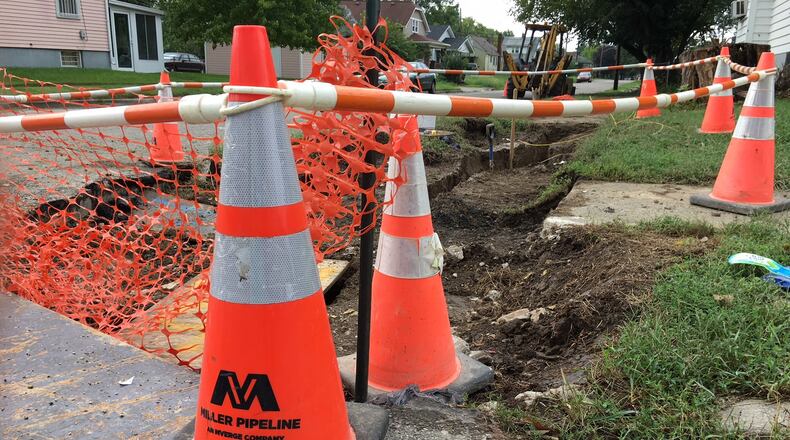MORE: Hundreds expected to bring samples to free water, soil testing event
Columbia Gas crews were working on replacing older, leak-prone pipes in the area when the incident happened, according to a report from the Boston Globe.
The four major energy companies in Ohio — Vectren, Duke Energy, Columbia Gas and Dominion East Ohio — all have programs to replace bare steel and cast iron pipelines, a mandate by the Public Utilities Commission of Ohio.
To replace more than 11,000 miles of main lines and service lines delivering natural gas to homes, the energy companies have spent a combined total of $3.8 billion through 2016 and project to spend $3.1 billion more dollars to complete the work, according to data provided by PUCO.
The work is necessary because bare steel and cast iron pipelines are “prone to corrosion and leaking,” PUCO spokesman Matt Schilling said.
“We feel good that Ohio has been working on replacing aging infrastructure for years now,” Schilling said. “What happened in Massachusetts just underscores the importance of what these companies are working on.”
Vectren is in the middle of its 15-year program and will begin work in the coming weeks in Fairborn. Duke Energy has completed its program, while Columbia Gas and Dominion East continue to work on 25-year plans.
SEE ALSO: McDonald’s announces big changes to Big Mac, other burgers
Vectren Energy crews have been replacing pipelines in the Dayton area since 2009 and will soon begin work in Fairborn, the company announced recently. Vectren is in the process of replacing more than 700 miles of pipeline, 16 of which lie in the Fairborn area, according to the company.
Vectren spokeswoman Natalie Hedde said they are closely following the investigation into what happened in Massachusetts but there are no safety concerns with pipeline replacement work here in Ohio.
“We are very confident of the safety and integrity of our pipeline system,” Hedde said. “These projects are more about ensuring that we can continue delivering natural gas safely and to maintain reliability.”
Vectren provides an interactive map on the company’s website showing where their crews are currently replacing lines, where they will be working in the future and where work has been completed.
The NTSB is leading the investigation into the Massachusetts gas explosions. The U.S. Department of Transportation Pipeline and Hazardous Materials Safety Administration, which tracks gas line failure incidents and other statistics, is assisting.
The older a pipeline is, the more susceptible it is to failing.
Vectren and Dominion Energy Ohio manage the state’s oldest pipelines: About 28 miles of Vectren’s pipelines were installed before 1940, and 1,915 miles of Dominion Energy Ohio’s pipelines are older than 1940, according to PHMSA records.
STAY CONNECTED: Greene County News on Facebook
Schilling said PUCO has 10 safety inspectors who conduct audits of pipeline operators’ records and do spot checks to make sure the records are accurate.
“Our pipeline safety experts are looking at any incident across the country and taking what they learn and applying that knowledge,” he said.
From 1998 to 2017, there were 276 natural gas pipeline incidents in Ohio, resulting in 11 fatalities, 40 injuries, and more than $110 million in costs, according to data provided by PHMSA.
So far this year, there have been seven incidents in the state, with no fatalities or injuries, resulting in more than $6 million in costs, according to PHMSA.
11,633: Miles of old natural gas pipeline being replaced in Ohio
$3.8B: Spent by Ohio’s four major energy companies through 2016
$3.1B: Projected cost by the energy companies to finish replacing the old pipelines
Source: Public Utilities Commission of Ohio
About the Author
